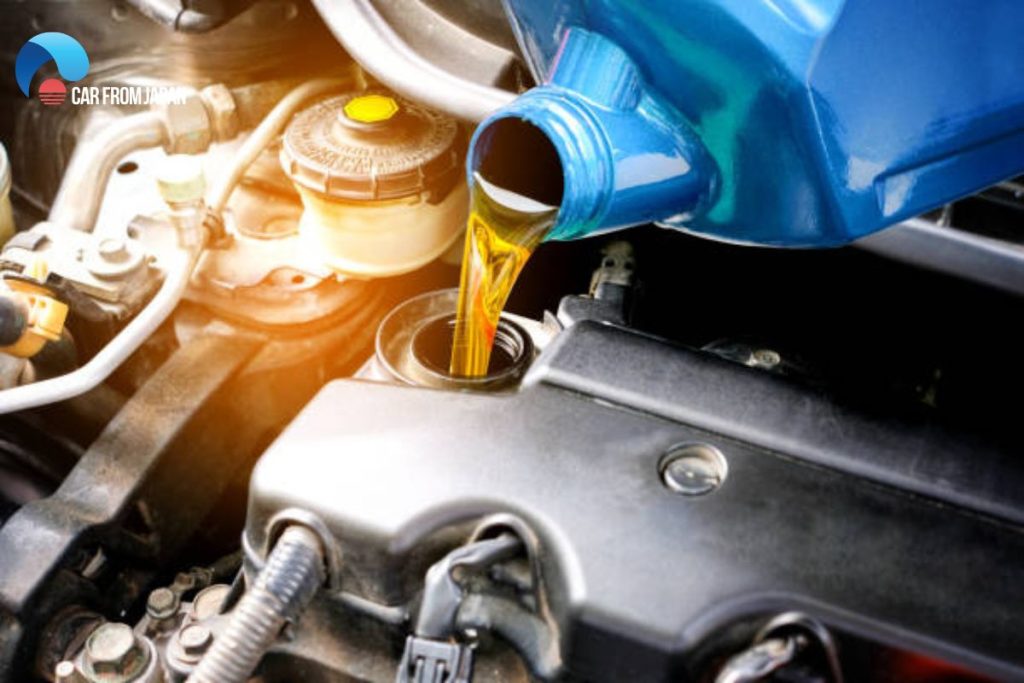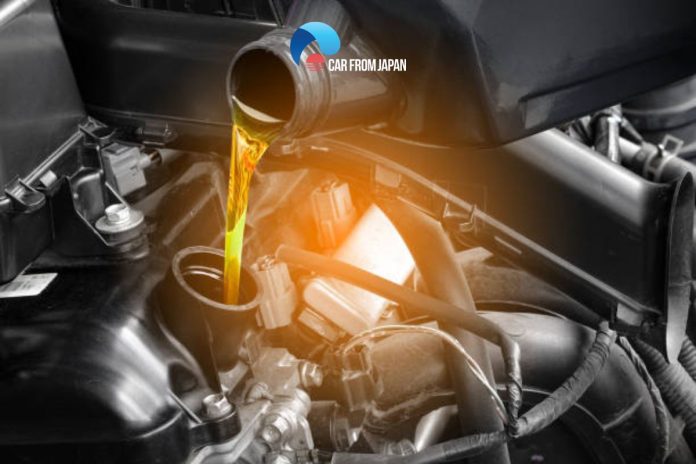Even beginner drivers know that you need to change your engine oil every now and then, but knowing how often to change oil might be a confusing matter due to recent innovations in the auto industry. How often to change oil also varies based on your car’s make and model, your driving conditions, and driving habits.
This ultimate guide on oil change will explain in great detail the factors that affect how often should you change your oil, how often to change oil in different circumstances, the cost of an oil change, how to pick the right oil for your vehicle, and useful pro tips on oil change and monitoring your engine oil for optimum performance.
Contents
Why You Must Change Your Oil Frequently
Think of an oil change as the cheapest insurance you can buy for your car’s engine. It is the single most important maintenance job you can do. Skipping it to save a few dollars now can easily lead to thousands in engine repair bills down the road. Here’s exactly why it’s so critical.
Warranty
If you don’t change your oil on time and with the proper products, it could void your car’s warranty.
Therefore, when a vehicle is new, the answer is simple: If you don’t want to void your powertrain warranty, follow the oil type, mileage, and time recommendations in the owner’s manual. In most cases, you’ll be taking your vehicle to the dealer for required inspections and maintenance, and oil changes will be included in the service.
It is a vital maintenance
Oil is the lifeblood of your vehicle’s engine. Although it might not sound like important maintenance, making sure there’s always enough oil, and the right type of oil at that, is the easiest way to ensure that you avoid catastrophic engine failure and expensive repairs.
This is especially important if you’re driving an older vehicle. When a car is past the 100,000-mile mark, wear on the engine can cause it to burn off extra amounts of oil every time you drive. Although small, such a loss adds up over time, depleting the oil level faster and thus requiring more frequent oil changes.
The second reason you should check your oil level and have oil changes more regularly with an older vehicle is that high-mileage vehicles are also more prone to oil leaks. Remember to check your oil regularly and top it up in time to avoid serious engine damage.

What Affects Oil Change Frequency?
The type of engine oil, the age and make of your vehicle, and driving habits all affect when to change engine oil.
Oil type
It used to be normal to change the oil every 3,000 miles, but with modern lubricants, most modern engines today recommend an oil change for every 5,000 to 7,500 miles and even 10,000 miles. Moreover, if your car’s engine requires the premium full-synthetic motor oil, it might go as far as 15,000 miles between oil changes.
This is mainly attributable to the changes in engine design and manufacturing that have led to the need for higher-quality oils. Most of today’s cars are designed to use either a full synthetic or a synthetic blend oil, which lasts longer before its viscosity breaks down.
What allows the premium synthetic oils to extend the average oil change interval to an impressive 10,000 to 15,000 miles between services?
Synthetic oil is designed to be more effective at resisting viscosity breakdown, and thanks to this, full synthetic or synthetic blend oils last longer. To achieve this, these oils are added with special additives, which also keep dirt and particles in suspension longer so that the oil filter can catch them. In general, such resistance to breakdown and contaminants can also help prolong the life of your engine to a certain extent.
Synthetic oil can also withstand more extreme temperatures, which means it won’t break down in an overheated engine or during hot weather. In addition, in very cold winters, synthetic oil will start flowing as soon as you start your car, thus you will not experience difficulty starting that is so typical on those freezing winter mornings.
Synthetic oil can also help engines that are prone to building up sludge, such as certain Volkswagen and Toyota models in the olden days. This residue, formed when oil breaks down, can block the flow of oil, leading to malfunction and even permanent damage to an engine. Without sludge buildup, synthetic oil would help extend the engine’s lifespan.
So, should you always opt for synthetic or synthetic blend oils? Almost all newer models use synthetic oil or a blend, and if the manufacturer specifies as such in the manual, you must always and only use it.
Otherwise, if you own an older model that still uses conventional petroleum-based oil, you have a choice. Read on to know whether you should use synthetic oil for your engine based on your driving conditions and driving habits.

Your vehicle
The second factor that affects how often to change oil is the make and model of your vehicle. In general, many professionals recommend a shorter oil change interval for older models.
That said, checking your manual would be a good idea. Understandably, service providers would benefit from prompting you to have your vehicle checked in for an oil change even sooner than needed, as during the service, they would also inspect your vehicle for other potential problems.
A note on recent auto innovations: Some newer vehicles have a built-in oil-life monitor. This gadget uses an algorithm, sensors, and software that keep track of drive temperatures, cold starts, driving hours, idling hours, and engine revs. It uses that data to calculate the oil’s condition and warranty-preserving change intervals.
Keep in mind that the oil monitor is calibrated for the oil type recommended in the owner’s manual. Service alerts are displayed in the instrument cluster. In some systems, one of the instrument-cluster information screens will read out remaining oil life as a percentage.
This is much different from the red oil-pressure warning light that glows when you start the engine. If that’s on while you’re driving or idling, it means you’re out of oil or have a very serious engine issue. If this is the case, do not attempt to drive, but inspect your oil level at once and troubleshoot.
Your driving habits
Your driving habits also affect how often to change your oil. There are often different recommendations for normal and severe driving. Recommended oil change intervals vary widely depending on whether you tow and how often, the weather, and the road conditions on which you drive.
If you live in a region with very cold winters or very hot summers, or if you use your vehicle for towing or hauling heavy material, synthetic oil is your best bet. Another severe driving condition that shortens engine oil life is short distances below highway speeds. Five thousand miles on the highway in five months is better than 1,500 miles of in-town driving in five months.
Severe driving conditions that shorten oil change intervals include:
- Extreme hot-weather stop-and-go driving.
- Driving at low speeds for long distances.
- Excessive idling.
- Driving long miles on dusty, muddy, salty, sandy, or gravel roads.
- Long-distance trailer towing.
- If you make many short trips of five miles or less in normal temperatures.
- If you make many short trips of 10 miles or less in freezing temperatures.
- Track driving.
While synthetic generally holds up better and can serve for more miles, it is equally important to not extend oil changes beyond the time interval recommended by the manufacturer, typically six months or a year if it is a motor that is not driven many miles or on many short trips.
How Often To Change Oil: The Rules
So how often should you change your oil? The short and safe answer: Check your owner’s manual. Don’t make assumptions on the interval based on past experiences or guidance from mechanics who profit from the work, because the timing has evolved over the years.
Many cars, pickups, and SUVs now have service reminder monitors that alert drivers when to change their oil. These systems typically monitor the number of miles a vehicle has traveled, and they also sense how hard the car is being driven and adjust accordingly.
Or, to put the question differently, how many miles for oil change? Most carmakers now recommend oil changes between 7,500 and 10,000 miles, although some specify 5,000-mile intervals.
In general, many professionals recommend a shorter oil change interval for older models. According to Ford Motor Company, drivers with normal driving conditions and habits who own 2008 and newer models should change their engine oil every 7,500 miles or six months, whichever comes first. Meanwhile, drivers should change the oil in vehicles 2007 and older every 5,000 miles or six months, whichever comes first.
Drivers with less typical or severe driving conditions and habits should change engine oil every 5,000 miles or six months for vehicles 2008 and newer, and every 3,000 miles or three months for cars 2007 and older. Less typical driving habits include frequent off-road driving or driving in dusty conditions, towing or carrying heavy loads, excessive idling or driving at low speeds for long distances.
How Much Does an Oil Change Cost?
An oil change typically costs between $20 and $55, and you should expect to pay an average of $45 to $50. Using synthetic oil bumps the price to $45 to $70 on average.
Aside from choosing between a premium blend or full synthetic, the oil filter is also a big factor. Premium filters, compared to an economy filter, cost about $6, compared to $3.
Do note that many auto service professionals charge extra for late-model cars, as the oil change requires significantly more labor because engine and body components get in the way, making accessibility more difficult. A premium blend or full synthetic oil change for these more troublesome newer models might cost about $75 to $95.
Customers shop for oil changes and want and look for the cheapest price. However, the whole reason we change our oil is to make our expensive cars last, so why skimp on the least-expensive service on your car?
Choosing the Right Oil for Your Car
Take a look at your owner’s manual. As mentioned earlier, don’t jump at getting synthetic oil for your engine if there is no need.
In many newer models, the weight of your car’s motor oil is printed on the cap where you add oil. Make sure you know what’s recommended or required by your automaker before you visit your mechanic so that you can control the cost of the oil they’re putting in.
What if you have a much older car? You do not necessarily need special motor oil like the expensive synthetic oil if your manufacturer does not call for it and your car has been running well with the traditional petroleum-based oil.
Synthetic blend oil and full-synthetic oils can cost from two to four times more compared to conventional oil. If you’re not sure what oil you should be using because you don’t have an owner’s manual, you should be able to find it online, or check with your local dealer or an online enthusiast group for your particular model.
How Often To Change Oil Tip: Watch The Dashboard Lights

It’s recommended that you keep track of the miles you drive between oil changes, though some cars make this easier with a dash indicator that tells you it’s time to head to the shop, as part of what is called an oil life monitoring system.
These systems track your mileage and also use data from your driving that’s analyzed by your car’s computer to determine when your car needs an oil change. When the light illuminates, it’s best to get the oil changed as soon as possible, but it’s not necessarily urgent.
If your car has an oil life monitoring system, note that this light is different from your oil pressure light, which illuminates on your dash if your car’s oil isn’t flowing properly due to a low level, a failing oil pump, a leak in the system, or some other issue. Learn the difference between the two dash lights, because if the oil pressure light comes on, you need to stop driving as soon as possible to avoid engine damage.
Get in the habit of checking your oil at least once a month to ensure your car’s not leaking or burning oil. If the level is low, top it up as soon as possible to avoid engine damage and ensure an optimum driving experience.
Check & Refill Oil Between Changes
You should keep an eye on your car’s oil levels. Professionals note that even newer cars can require the oil to be topped off between changes to ensure the engine runs smoothly without interruption.
If you don’t know how often to change your oil or how to check it between oil changes, consult your owner’s manual. These habits will help ensure the longevity of your engine.
It is generally recommended that you check your oil level at least once a month. Be sure to get repairs done at the first sign of a leak.
Some newer cars have electronic oil monitors and don’t have traditional dipsticks for manual inspection. If you do have a dipstick, follow the instructions below to check your oil level and inspect whether you need an oil change.
First, make sure the car is parked on level ground. If the engine has been running, be aware of potential hot spots under the hood.
With the engine off, open the car’s hood and find the dipstick. Pull the dipstick out from the engine and wipe any oil off its end. Then insert the dipstick back into its tube and push it back in.
Pull it back out, and this time quickly look at both sides of the dipstick to see where the oil is on the end. Every dipstick has some way of indicating the proper oil level, whether it be two pinholes, the letters L and H (low and high), the words MIN and MAX, or simply an area of cross-hatching.
If the top of the oil “streak” is between the two marks or within the crosshatched area, the level is fine. But if the oil is below the minimum mark, you need to add oil.
Pay close attention to the oil’s color. Good oil should be a clear brown-black color, though color is not the only indicator of oil life. If the oil is murky or opaque, it might be time for a change, and if it’s milky, your engine may be leaking coolant.
Look closely for any metal particles, too, because this could mean there is internal engine damage. If you see either of these conditions, get the car to a mechanic for further diagnosis.
If everything is okay, wipe off the dipstick again and insert it back into its tube, making sure it’s fully seated. Close the hood and you’re done.
In Conclusion
Ultimately, knowing when to change your oil isn’t about following an old, one-size-fits-all rule. It’s about listening to your car. Whether it’s the schedule printed in the owner’s manual or the light that comes on your dashboard, that’s the right time to do it. Getting this one simple thing right is the key to a long and trouble-free engine life.



